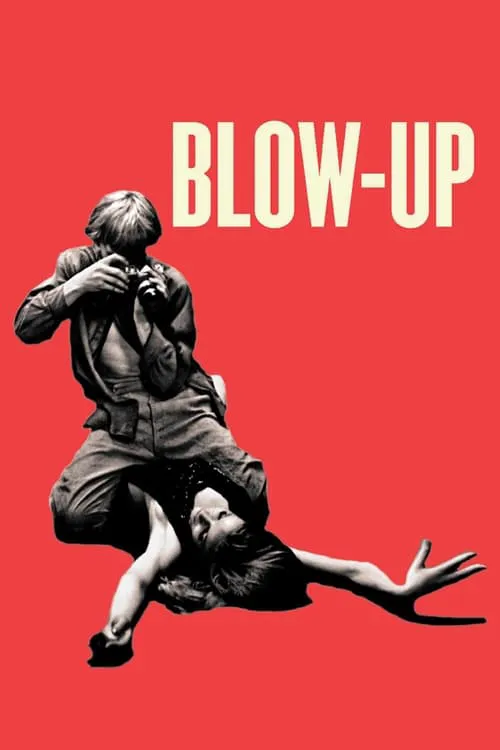Blow-Up

Plot
Blow-Up is a 1966 British psychological drama film directed by Michelangelo Antonioni, known for his distinctive and influential style of storytelling. The film is a commentary on the alienation, superficiality, and disillusionment of the 1960s youth culture. It follows the life of Thomas, a successful photographer, played by David Hemmings, who finds himself caught between his mundane existence and the possibility of discovering something real and meaningful. Thomas is a mod photographer who has made a name for himself in London's fashionable circles. He has a beautiful model, Pat, played by Veruschka von Lehndorff, but their relationship is more of a convenient arrangement than a deep emotional connection. Thomas's world is bounded by the trappings of mod culture: fashion, pop music, marijuana, and easy sex. However, despite his outward success and popularity, Thomas feels unfulfilled and disconnected from the world around him. He is a spectator, observing life through the lens of his camera, but unable to participate or experience it deeply. The film begins with Thomas preparing to leave for a shoot at a tennis court. He is accompanied by his assistant, Bill, played by Brian Bailey, who is responsible for carrying the camera equipment. Thomas is distracted and preoccupied, but the events of the day will soon become more pressing and life-changing. As they arrive at the tennis court, Thomas notices a couple in the distance, and on a whim, he snaps a picture of them. Initially, he thinks nothing of it, but a few shots later, he captures a glimpse of the couple, and one of them appears to have fallen to the ground. The image is so fleeting that Thomas is not sure what he has captured. He decides to enlarge the photograph and examine it in greater detail. This leads him on a journey of self-discovery and obsession, as he becomes increasingly fixated on the mysterious image. Thomas becomes convinced that the photograph shows a death - the woman in the distance, lying on the ground, seems to be motionless. He becomes obsessed with uncovering the truth behind the image, which leads him to investigate further. As Thomas becomes more entrenched in the mystery, he begins to question his own reality and perception of the world. He becomes disconnected from his friends and colleagues, and his relationships with Pat and Bill start to fray. The lines between reality and his own distorted perception of the world begin to blur. Thomas's fixation on the photograph has become an all-consuming force, and he becomes isolated from the world around him. Thomas's investigation leads him to the location of the tennis court, where he questions a group of bystanders who may have witnessed the incident. However, their lack of interest and seeming obliviousness only add to Thomas's growing sense of unease and confusion. The image remains shrouded in mystery, and Thomas's pursuit of the truth becomes a kind of existential quest. He is searching for meaning and connection, but in a world that seems to be indifferent and disconnected, he finds only confusion and despair. Throughout the film, Antonioni employs a distinctive visual style, using long takes, deep focus, and a muted color palette to create a sense of detachment and alienation. The use of close-ups and point-of-view shots creates a sense of intimacy and immediacy, drawing the viewer into Thomas's world. However, the camera also acts as a kind of filter, separating Thomas from the world around him and emphasizing his feelings of disconnection. In the final scenes of the film, Thomas realizes that the photograph may be nothing more than a trick of the light, a fleeting moment that has been distorted by his own perception. The mystery remains unsolved, and Thomas is left to ponder the implications of his journey. The image has become a symbol of his own disconnection and disillusionment, a reminder that the world is a complex and multifaceted place that may never be fully understood. The film ends with Thomas, lost and alone, walking away from the tennis court, his mind still consumed by the mystery of the photograph. The camera lingers on his footsteps, a sense of movement and possibility, but also a sense of detachment and unease. The image remains frozen, a snapshot of a moment in time, a reminder that the world is always in motion, and that the truth is always just out of reach.
Reviews
Recommendations




